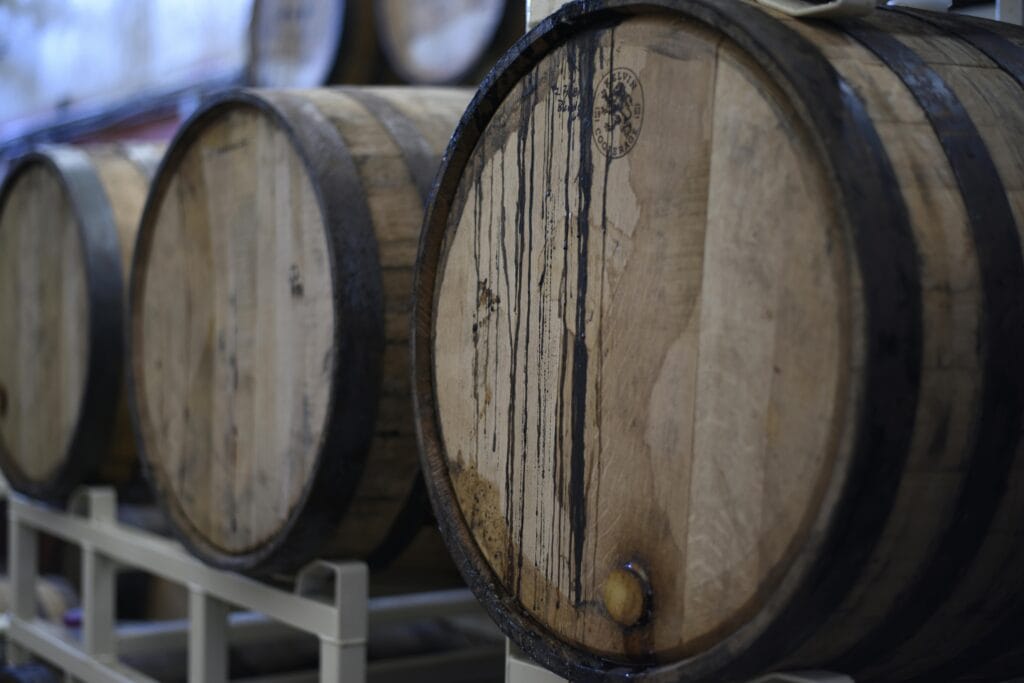When you sip a rich, smoky whisky or a smooth, velvety rum, you’re not just tasting the spirit itself—you’re tasting years of history, craftsmanship, and the silent work of a wooden cask. For centuries, alcohol casks have played a crucial role in transforming raw spirits into exceptional drinks, turning clear, fiery liquids into complex, aromatic treasures.
This process is no accident—it’s a dance between time, temperature, wood, and tradition. In this article, we’ll explore why casks are the secret behind exceptional spirits, the types of casks used, and how they influence flavor, aroma, and quality.
1. Why Casks Matter in Spirit Making
Before bottling, most premium spirits—such as whisky, rum, brandy, and even some tequilas—spend years resting inside casks. This isn’t just storage; it’s maturation.
Casks affect spirits in three key ways:
- Flavor Development – The spirit extracts compounds from the wood, such as vanillin, tannins, and lactones, which add notes like vanilla, spice, coconut, or smoke.
- Color Transformation – Clear spirits gradually take on golden, amber, or deep brown hues from the charred or toasted wood.
- Aroma Enhancement – The porous nature of wood allows air exchange, subtly oxidizing the liquid and enhancing aroma complexity.
Without casks, many of our favorite drinks would be flat, raw, and unrefined.
2. A Brief History of Alcohol Casks
The use of barrels for storing alcohol dates back to Roman times, when wooden casks replaced fragile clay amphorae for transporting wine. The Celts, skilled in cooperage (barrel making), perfected the craft, and soon barrels became standard for storing beer, wine, and spirits.
By the 18th and 19th centuries, distillers noticed something extraordinary—spirits stored in casks for long periods tasted significantly better. This led to the modern concept of aging, where the cask is not just a container but a tool for crafting exceptional flavors.
3. Types of Casks and Their Unique Influence
The type of cask used can completely change the spirit’s final profile. Here are the main types:
A. American Oak Casks
- Origin: Mainly from the U.S.
- Used For: Bourbon, Scotch whisky, rum.
- Flavor Impact: Vanilla, caramel, coconut, and gentle spice.
- Special Note: U.S. law requires bourbon to be aged in new, charred American oak barrels. After that, these barrels are often sold to Scotch and rum producers.
B. European Oak Casks
- Origin: Spain, France, Eastern Europe.
- Used For: Sherry, Scotch whisky, brandy.
- Flavor Impact: Richer tannins, dried fruit, clove, nutmeg, and dark chocolate notes.
C. Sherry Casks
- Origin: Spain.
- Used For: Aging whisky with sweeter, richer profiles.
- Flavor Impact: Dried fruits, figs, raisins, and spice.
D. Rum Casks
- Origin: Caribbean and Latin America.
- Used For: Whisky finishing.
- Flavor Impact: Tropical fruit sweetness, molasses, and spice.
E. Wine Casks
- Origin: Global wine regions.
- Used For: Finishing whisky, rum, or brandy.
- Flavor Impact: Berry fruit, red wine tannins, floral and nutty hints.
4. The Science of Cask Aging
Aging is more than waiting—it’s a chemical transformation.
Inside the cask:
- Extraction: The spirit pulls flavor compounds from the wood.
- Oxidation: Oxygen seeps through the wood, softening harsh notes.
- Evaporation (Angel’s Share): Around 2–5% of the spirit evaporates each year, concentrating the remaining liquid.
- Interaction: Chemical reactions between the spirit and wood create complex new aromas and flavors.
Climate’s Role:
- In warm climates (e.g., the Caribbean for rum), aging happens faster due to increased interaction between spirit and wood.
- In cooler climates (e.g., Scotland), the process is slower, creating more delicate flavors.
5. Cask Finishing – The Extra Touch
Many distillers now use cask finishing to add complexity. This involves moving a spirit from one type of cask to another for a few months or years before bottling.
Examples:
- Scotch aged in bourbon barrels, then finished in sherry casks for sweetness.
- Rum aged in American oak, then finished in port wine casks for fruity depth.
Finishing allows distillers to layer flavors and create unique, limited-edition releases that excite collectors.
6. The Craft of the Cooper
The cooper—the artisan who makes casks—is as important as the distiller. Casks are made from carefully selected wood, seasoned for months or years, then bent and shaped without nails. The inside is charred or toasted to caramelize wood sugars, adding color and flavor.
A single cask can be reused for decades, influencing multiple batches of spirits. Each use changes its impact—new casks give strong wood flavors, while older ones give softer, more subtle notes.
7. Collectibility and Investment Value
Certain casks and their spirits have become highly collectible. Rare cask-aged whiskies, especially those matured in unique barrels like Pedro Ximénez sherry casks or Japanese Mizunara oak, can sell for thousands of dollars.
Investors now buy entire casks, storing them until the spirit reaches peak maturity, then bottling or selling at a premium.
8. Caring for Casks
Even after filling, casks need attention:
- Rotation: To ensure even maturation.
- Humidity control: Prevents excessive evaporation.
- Leak repairs: To protect valuable spirits.
Distilleries treat casks almost like living things, constantly monitoring and maintaining them.
9. Casks in Modern Innovation
Today’s distillers experiment with casks beyond traditional oak. Some use chestnut, acacia, or even maple wood. Others try aging spirits in casks that previously held beer, coffee, or exotic wines.
This innovation appeals to adventurous drinkers looking for bold, unexpected flavors.
10. Final Sip – Why Casks Are the Silent Heroes
The next time you enjoy a glass of whisky, rum, or brandy, remember that half the magic comes from the cask. The wood has been silently working for years, turning raw spirit into a masterpiece of flavor, aroma, and color.
In a world of fast production, cask aging is a reminder that some things are worth waiting for. Exceptional spirits are not rushed—they are nurtured, shaped, and perfected by the patient embrace of a wooden cask.





